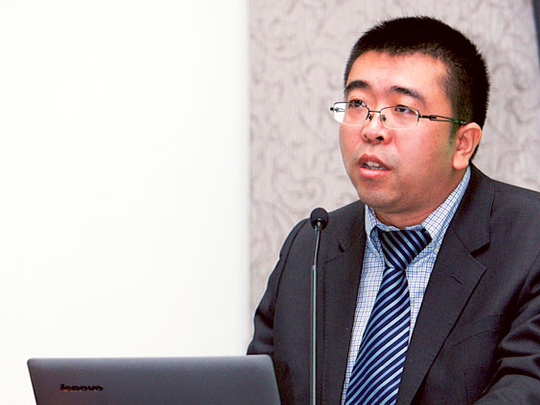
Dubai: China’s consumer electronics brand Hisense expects 100 per cent growth in revenues from the Middle East this year to $50 million.
“Globally, our brand business has grown close to 200 per cent. We have already clocked $20 million in revenues by end of May from the region. By end of June, we expect to cross last year’s figure,” Terry Wang, general manager of Hisense Middle East, told Gulf News in an interview.
He said that TVs, mobile phones and white goods, which usually include products such as home appliances, are expected to do better this year.
Last year, Hisense launched around six handset models and expects to launch more than 10 models this year, including 4G LTE.
The company recently launched the world’s largest phablet (tablet-smartphone combo) — 6.8-inch Hisense X1 — in the market.
Phablets are making big inroads in the emerging markets and especially in Asia.
Demand for phablets
“Demand and the trend for phablets in the region are increasing. Even Apple has finally decided to go for bigger screen sizes,” said Nabila Popal, senior research manager at International Data Corporation (IDC).
It is too early to say whether phablets will completely replace both the tablet and smartphone categories, she said, adding that it is gaining traction.
“We sold around 120,000 mobile phones and expects between 450,000 and 500,000 units this year in the Middle East. As of now, we have crossed more than 150,000 units,” Wang said.
Wang said that the Middle East is one of the fast-growing markets for Hisense and smartphone is the fastest growing category among consumer electronics.
Hisense also makes homes appliances and TVs for other manufacturers and earns more revenue than brand business.
“Our strategy is to become the number one Chinese brand in the Middle East.”
Hisense has two factories in China for TVs and one in South Africa. They also have a R&D centre in China, and five centres in North America.
The home appliances market is “very competitive,” he said and added that more than 15 top players across the world are vying for the market share.
“Our strategy is to build our brand identity in the market than concentrating on market share,” he said.
Chinese brands are “very aggressive in the market.”
“But my advise for the Chinese brands is to build long-term strategy. In the last 10 years, many brands from China came and vanished. There is a lot to learn from Huawei and Lenovo. These brands have grown exponentially in the last three to four years but they were in the market for many years,” he said.
He said, a lot of promotions can build volume but not value and, at the same time, they cannot stay competitive in the market.
“We are shifting our focus from original equipment manufacturer [OEM] to brand business. We are in the Middle East for more than 10 years as an OEM but started as a brand business in 2011. Brand business contributes 40 per cent to our growth.
Hisense spends five per cent of its revenue on marketing and expects to maintain the same this year also.
He said the biggest markets in the region for brand business are Saudi Arabia and UAE but in the OEM business, Saudi Arabia is the number one market followed by Iraq.












